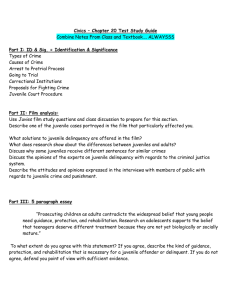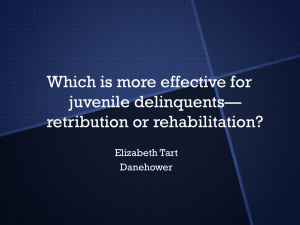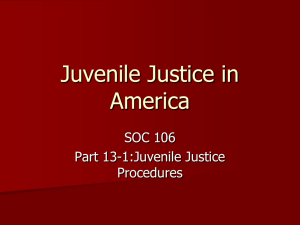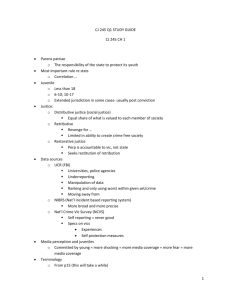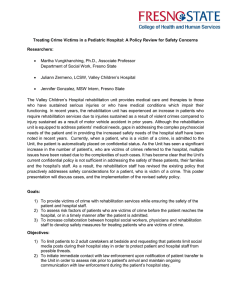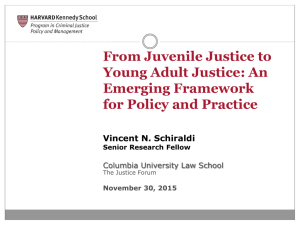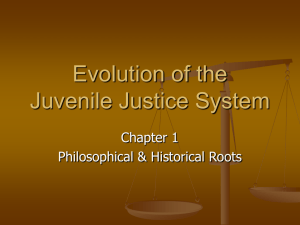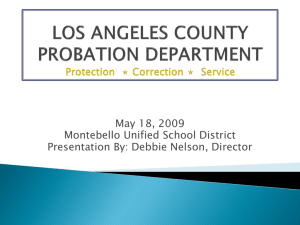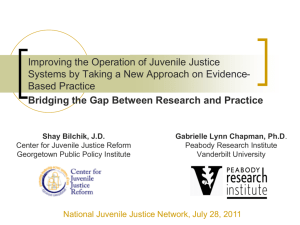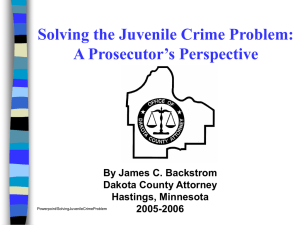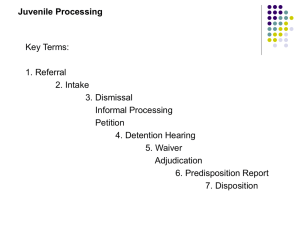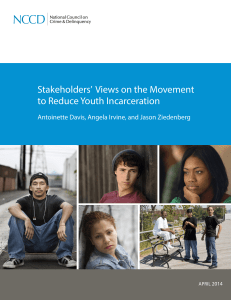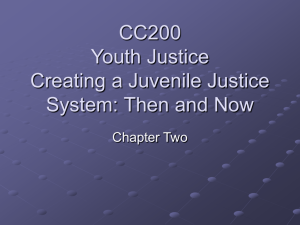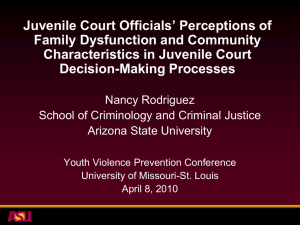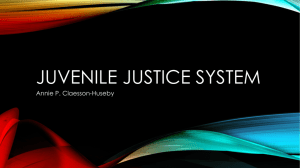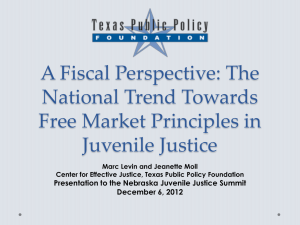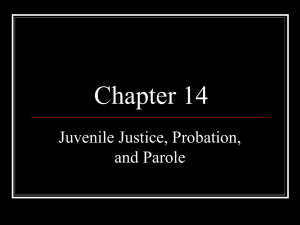chhspp
advertisement
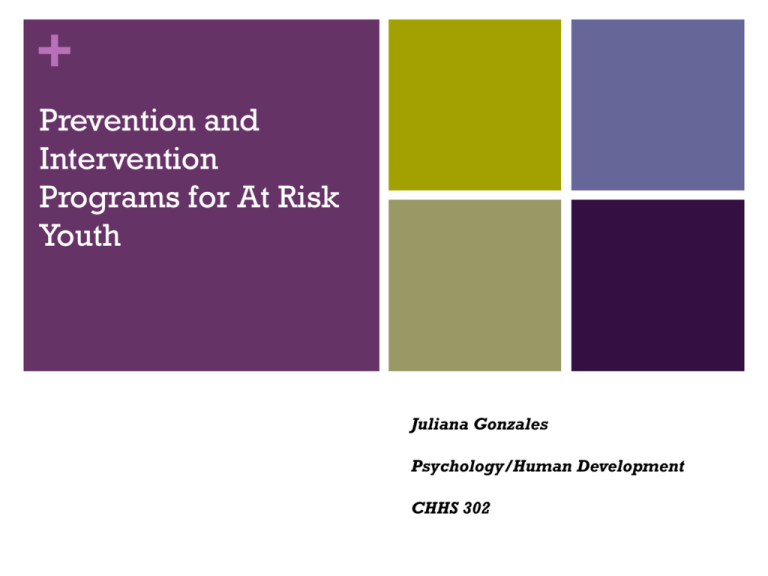
+ Prevention and Intervention Programs for At Risk Youth Juliana Gonzales Psychology/Human Development CHHS 302 + Professional interest profession goal MSW At risk youth Foster care adolescents Juvenile Halls or Prevention Programs Future + Critical Situation Growing number of incarcerated youth Growing population in prisons Correction vs. Rehabilitation ( Intervention vs. Prevention) + Rhetorical timing Economic Crisis More money for correction than for rehabilitation – Correction/person ( approx. $240) – Rehabilitation/group + They Say Underdeveloped pre-frontal cortex >>>risky behavior->substance use -> delinquent activity (Krebs, 2010) 1970’s and onward change in justice system, proposition 184 in 1994 ( Stahlkopf, 2010) Juvenile incarceration is expensive and high rates of recidivism (over 50%) (Justice Policy Institute, 2009) “2007 an estimated 2.18 million juveniles were arrested… 15% of the arrests in the US.” ( Diamond, 2011) + Community Connection Community members – support rehabilitation type programs Department of corrections –rethink the corrections vs rehabilitation services Statewide representatives –fund more rehab and prevention programs + References Diamond, B., Morris, R., & Caudill, J. (2011). Sustaining families, dissuading crime: The effectiveness of a family preservation program with male delinquents. Journal of Criminal Justice, 39(4), 338-43. doi: 10.1016/j.jcrimjus.2011.03.005 Krebs, C., Lattimore, P., Cowell,A. Graham, P. (2010) "Evaluating the Juvenile Breaking the Cycle Program's impact on recidivism." Journal of Criminal Justice 38, 109-117.doi:10.1016/j.jcrimjus.2010.02.008 Stahlkopf, C., et. al., Testing Incapacitation Theory: Youth Crime and Incarceration in California. Crime & Delinquency v. 56 no. 2 (April 2010) p. 253-68 Turner, S., & Fain, T. (2006). Accomplishments in Juvenile Probation in California Over the Last Decade. Federal Probation, 70(1), 63-69. Retrieved from EBSCOhost. Justice Policy Institute, 2009 Justice Policy Institute (2009). The costs of confinement: Why good juvenile justice policies make good fiscal sense. Washington, D.C.: Author. Retrieved from http://www.justicepolicy.org/images/upload/09_05_REP_CostsOfConfinement_JJ_P S.pdf. COMMENTS AND QUESTIONS? + THANK YOU
